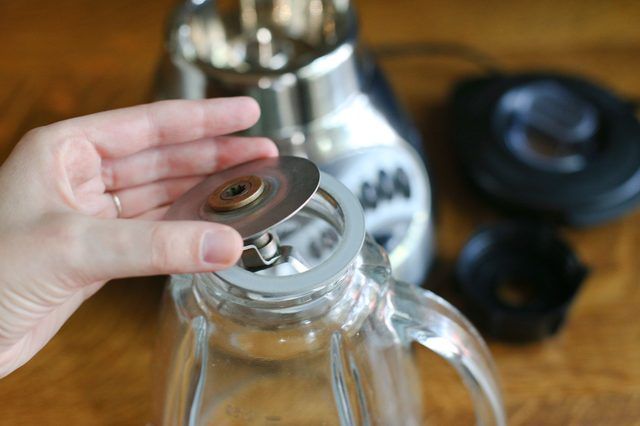For anyone diving into the world of culinary exploration or health-conscious individuals seeking to add a nutritious punch to their diet, a blender stands as an indispensable kitchen ally. However, the first step toward creating those vibrant smoothies, silky soups, or decadent sauces starts with understanding how to assemble your blender properly. How to assemble blender guide is your roadmap through the process, ensuring you navigate the assembly of your blender effortlessly, setting the stage for a seamless juicing or blending experience
In the realm of culinary craftsmanship or wellness-driven lifestyles, the blender serves as an essential tool, transforming raw ingredients into delectable concoctions that tantalize taste buds and nurture well-being. Whether you’re a newcomer to the world of blending or a seasoned enthusiast seeking to upgrade your blending game, understanding the fundamental process of assembling your blender is the cornerstone of unlocking its full potential. From the seamless fusion of fruits and vegetables to the creation of velvety-textured soups and refreshing beverages, mastering the assembly of this kitchen powerhouse is the initial stride toward harnessing its myriad benefits. This comprehensive guide is tailored to walk you through the step-by-step process of assembling your blender, empowering you to embark on a journey of culinary creativity and healthful indulgence.
How do you put a blender together?
Assembling a blender typically involves a few key steps:
- Prepare Components: Unbox your blender and organize its components: the base, pitcher or container, lid, blades, and any additional attachments.
- Align the Pitcher: Place the pitcher or container on the base, ensuring it sits securely and aligns properly with any grooves or markings.
- Attach the Blades: Most blenders have removable blades that fit onto the base of the pitcher. Align and securely fasten the blades into place, handling them carefully due to their sharpness.
- Secure the Lid: Place the lid on the pitcher and ensure it locks firmly into position. Many blenders have safety features that prevent operation without a properly secured lid.
What are the steps of blender assembly?
The general steps for blender assembly are:
- Organize components.
- Place the pitcher/container on the base.
- Attach the blades securely to the base of the pitcher.
- Lock the lid firmly in place to ensure safety during operation.
- Perform a test run without ingredients to confirm proper setup.
How do you assemble a KitchenAid blender?
Assembling a KitchenAid blender involves similar steps to other blenders:
- Place the pitcher onto the base and align it correctly.
- Attach the blade assembly to the bottom of the pitcher securely.
- Ensure the lid is properly seated and locked in place.
- Confirm that the pitcher is properly aligned and locked onto the base before operation.
However, specifics can vary by model, so it’s crucial to refer to the user manual that comes with your KitchenAid blender for precise assembly instructions tailored to your specific model.
How to start a blender?
Starting a blender usually involves these steps:
- After assembling the blender with the pitcher, lid, and blades properly in place, plug it into a power source.
- Ensure the blender is set to the off position before plugging it in.
- Once plugged in, place the ingredients you wish to blend into the pitcher/container.
- Secure the lid properly.
- Depending on the blender, you might have different speed settings or preset programs; choose the desired setting and start blending by pressing the appropriate button.
Always refer to your blender’s specific manual for any unique start-up procedures or safety precautions to follow before using it for the first time.
Blenders can be quite user-friendly for beginners! They’re designed with simplicity in mind, usually featuring straightforward assembly and operation. Many models have intuitive controls, offering options like pulse settings or various speed levels, making them versatile for different recipes.
Understanding the parts of a blender can further ease the learning curve:
- Base or Motor Housing: This houses the motor and provides stability for the blender.
- Pitcher or Container: The receptacle where ingredients are placed for blending. It often has measurement markings and a pouring spout.
- Blades: Typically located at the base of the pitcher, these are responsible for chopping and blending ingredients.
- Lid: Covers the top of the pitcher, ensuring ingredients remain inside during blending. Some lids have an opening for adding ingredients while blending.
- Controls: Buttons or dials on the blender’s base that control speed, pulse settings, and sometimes preset blending programs.
- Base Feet or Suction Cups: These provide stability by gripping the countertop or surface to prevent the blender from moving during operation.
Step 1: Unbox and OrganizeWhen you unpack your blender, lay out all the components. Ensure you have the base, pitcher or container, lid, blades, and any additional attachments.
Step 2: Align the PitcherPlace the pitcher or container on the base. Ensure it sits snugly and aligns properly with the designated grooves or markings.
Step 3: Attach the BladesMost blenders have removable blades that fit onto the base of the pitcher. Carefully align and secure the blades into place. Be cautious while handling sharp components.
Step 4: Secure the LidPlace the lid on the pitcher and make sure it locks firmly into position. Some blenders have safety features that won’t allow them to operate without a properly secured lid.
Step 5: Plug-In and TestOnce everything is assembled securely, plug in the blender and give it a test run without any ingredients. This ensures everything is correctly set up before you start juicing or blending your favorite fruits and veggies.
Reference
When exploring blender assembly, it’s crucial to understand the components’ proper setup to avoid any mishaps during use. Juicer hunter, enthusiasts seeking the best tools for extracting nutritious juices, often look for blenders with straightforward assembly processes to streamline their juicing experiences.
This post was created with our nice and easy submission form. Create your post!



Comments
0 comments